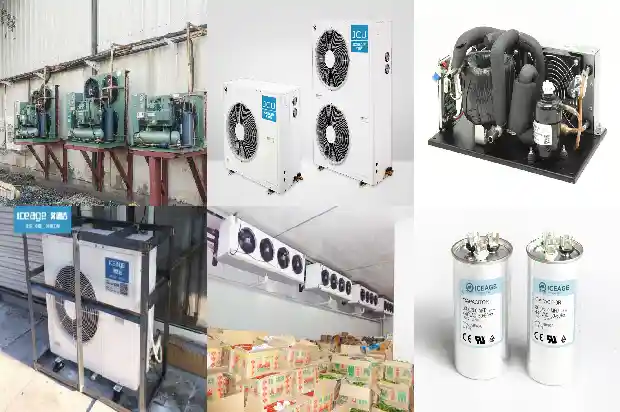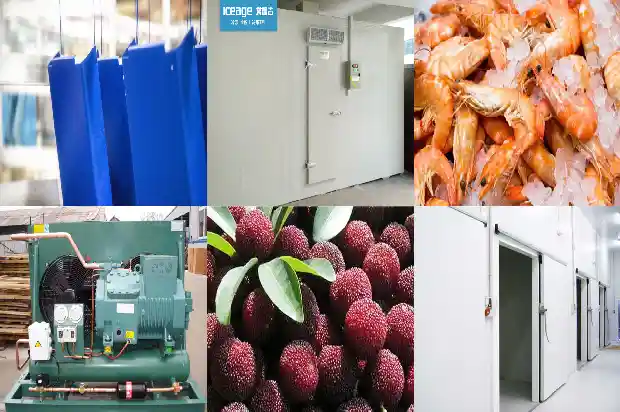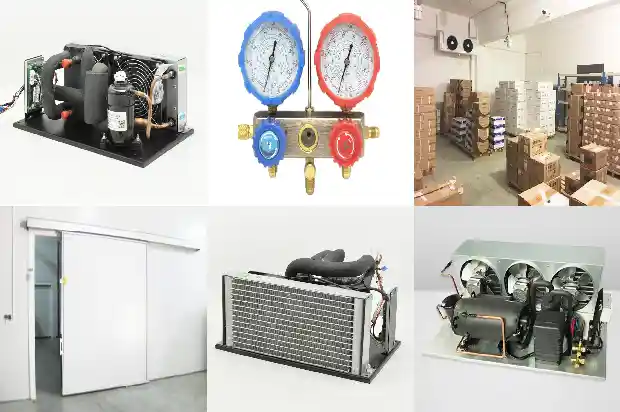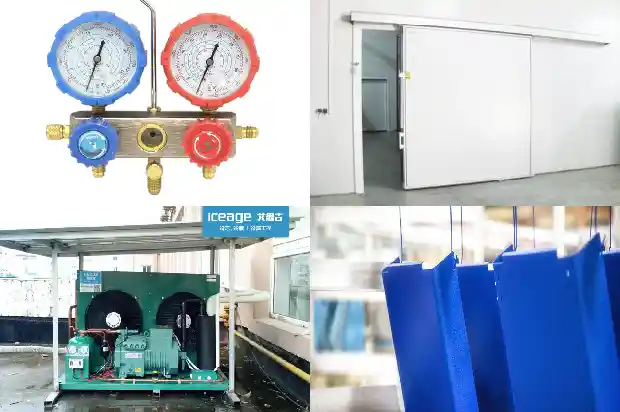How to Install and Maintain Industrial Chillers?
2025-01-08
As a manufacturer of industrial chiller equipment, chillers often operate 24 hours a day.

Installation Instructions for Chiller Units:
I. Before transporting the chiller unit, necessary protective measures should be taken. Pay attention not to damage the unit during transportation.
II. Unit Installation
I. Before transporting the chiller unit, necessary protective measures should be taken. Pay attention not to damage the unit during transportation.
II. Unit Installation
- When installing the chiller unit, be careful not to damage the unit. Reasonably arrange the space around the chiller unit to facilitate its maintenance.
- Design and install the chilled water and cooling water systems reasonably according to recognized pipeline system design and construction installation standards to give full play to the performance of the chiller unit.
The unit should be placed horizontally and installed in a ventilated area. - When the water source and the surrounding environment of the cooling water tower are harsh, a Y - type filter must be installed on the chilled water and cooling water return lines, and it should be cleaned regularly. An air vent valve must be installed at the highest point of the closed chilled water system, and a drain connection must be installed at the lowest point of the system for system drainage.
- Select an appropriate cooling tower according to the cooling capacity of the unit.
- After the chilled water pipe has passed the leak test, insulate the packaging chamber to avoid cold loss and pipe dripping.
III. Power Connection - The power supply of the chiller adopts three - phase four - wire. The main power cord of the unit is connected to the post in the electrical control box through the perforation of the box to ensure that the connection is firm each time.
- Power distribution requirements for the unit: Main power supply voltage: within ±10% of the rated voltage, main power supply frequency: within ±2% of the rated frequency.
- When the main power supply voltage fluctuation exceeds the specified range, starting the chiller unit is not allowed. Otherwise, it is regarded as improper operation, and the resulting damage is not within the company's warranty scope.
- When necessary, interlock circuits such as the water flow switch of the water system, pumps, and cooling tower motors can be correctly connected to the unit control circuit.
- The chiller unit has multiple protection measures such as current overload protection, high - and low - pressure protection at the compressor exhaust end, motor coil overheating protection, waterproof protection, and cooling water flow interlock protection.
Startup and Operation of the Chiller
(1) Preparation before Startup
(1) Preparation before Startup
- Check whether there are any abnormalities around the unit.
- Check whether the power connection of the unit is correct.
- Check whether the cooling water valve is open, whether the water tower is in standby mode, and whether the chilled water valve is open.
- First, turn on the pumps and the water tower in the system, and then turn on the chiller unit. (The water tank of the chiller unit must be filled with water. Otherwise, when there is no water, do not operate the pump.)
(2) Operating the Chiller - First, turn on the pump switch. At this time, pay attention to the running direction of the pump to ensure that the pump is running in the correct direction.
- If the chiller unit is equipped with a phase switch, when the phase is reversed, the red indicator light (phase fault) on the console lights up and the alarm rings. Please turn off the main switch of the power supply, then connect two of the power lines R.S.
T in opposite positions, and then turn on the power supply and the chiller unit. In this way, the machine can return to normal operation.
(3) Maintenance - Keep the cooling water tower clean, ensure good air circulation around the cooling tower, and keep the temperature low. Avoid any debris from entering the cooling tower to prevent a reduction in cooling efficiency.
- If the chiller is air - cooled, keep the surface of the chiller radiator clean, ensure good air circulation around it, and keep the temperature low. Clean the radiator regularly.

- If the chiller unit has been used for more than 6 months, if the high - and low - pressure systems often malfunction, or if the cooling capacity decreases, arrange for staff to clean the radiator. If the chiller has been out of use for a period of time, due to the solidification of scale, the pump impeller may be solidified by dirt. When starting, the pump impeller must be loosened first to prevent the pump impeller from not rotating and burning out the motor.
a) Maintenance cycle of regular parts (depending on the actual use of the mold temperature machine):
b) Faults, maintenance, fault indication, and maintenance methods of industrial chillers:
Voltage fault: First, turn on the main power supply of the chiller unit, open the power box, connect the power supply, and check whether the power supply voltage and phase voltage are normal.
Pump fault: Check whether the total impedance of the pump coil is open - circuit or short - circuit.
Then connect the power supply, check whether the power supply voltage is normal, press the green RESET button, pay attention to the running direction of the pump, and never operate the pump without water.
High - and low - pressure fault: If the chiller unit is equipped with a pressure gauge, pay attention to whether the pressure of the high - pressure gauge is higher than 300 PST. If it exceeds, check whether the water delivery of the cooling water tower is normal, whether the valves from the chiller unit to the cooling water tower are open, and whether the water in the cooling water tower is overheated (water temperature is higher than 34 degrees). If a Y - type filter is installed, check and clean the filter.
(c) The connected water tower should not be less than the rated power of the chiller unit.
(d) If the chiller has been used for a long time and the cooling capacity of the cooling tower and its surroundings has decreased, arrange for work to clean the radiator.
Compressor fault: Switch the power supply, check whether the high - resistance insulation of the compressor coil meets the requirements, whether the insulation value of the motor coil exceeds 1 megohm. When normally pressing the green RESET button of the compressor current overload protection device, pay attention to whether there is sufficient cooling water. Insufficient heat dissipation will cause the compressor current to be too high.
Related Articles
- What Are the Differences Between Chillers and General Water - cooled Equipment?
- Maintenance Strategies for the Working Cycle and Electrical Automatic Control of Chillers
- What are Refrigeration Equipment? What's the Principle of Chillers?
- Common Faults of Industrial Chillers
- Can You Solve These 4 Common Issues of Industrial Chillers?
- Common Faults and Corresponding Solutions of Chillers During Use
- Introduction to Lithium Bromide Absorption Chillers
- 8 Maintenance Procedures for Industrial Chillers
- Effective Measures to Prevent Compressor Failures in Industrial Chillers
- Reference Points for Selection of Screw - type Chillers
- How to accurately choose water-cooled and air-cooled chillers?
- When to Consider Replacing Industrial Chillers
- Analysis and Treatment of Common Low-Pressure Faults in Chillers
- Analysis and Treatment of Common Low Pressure Faults in Chillers
- Maintenance of General-purpose Screw-type Water-cooled Chillers
- Introduction to common cooling capacity performance coefficient and main parameters of water chillers
- Switching on and off procedures and operational logic of centrifugal chillers with cold water
- How does an industrial water chiller operate when it is used for water treatment?
